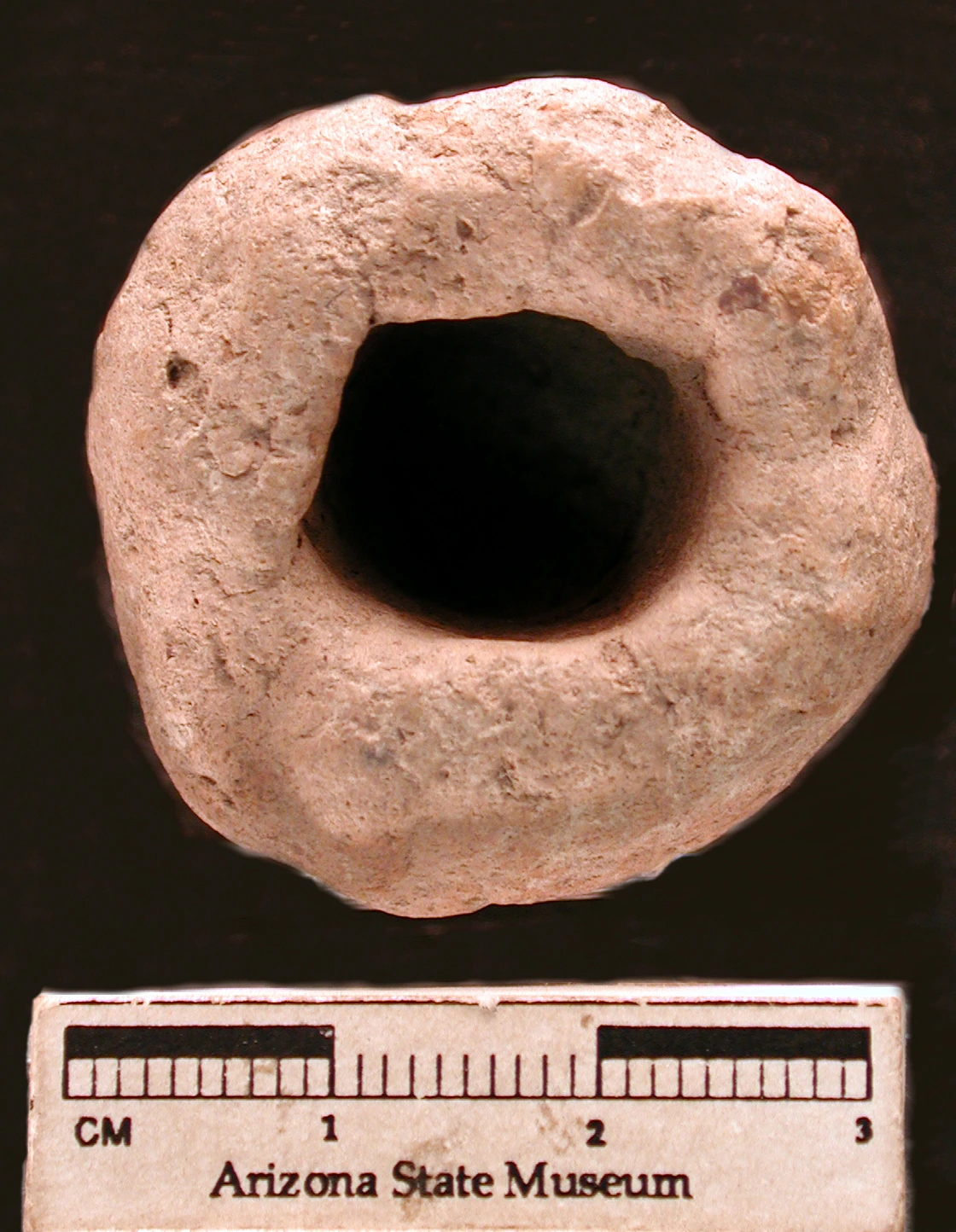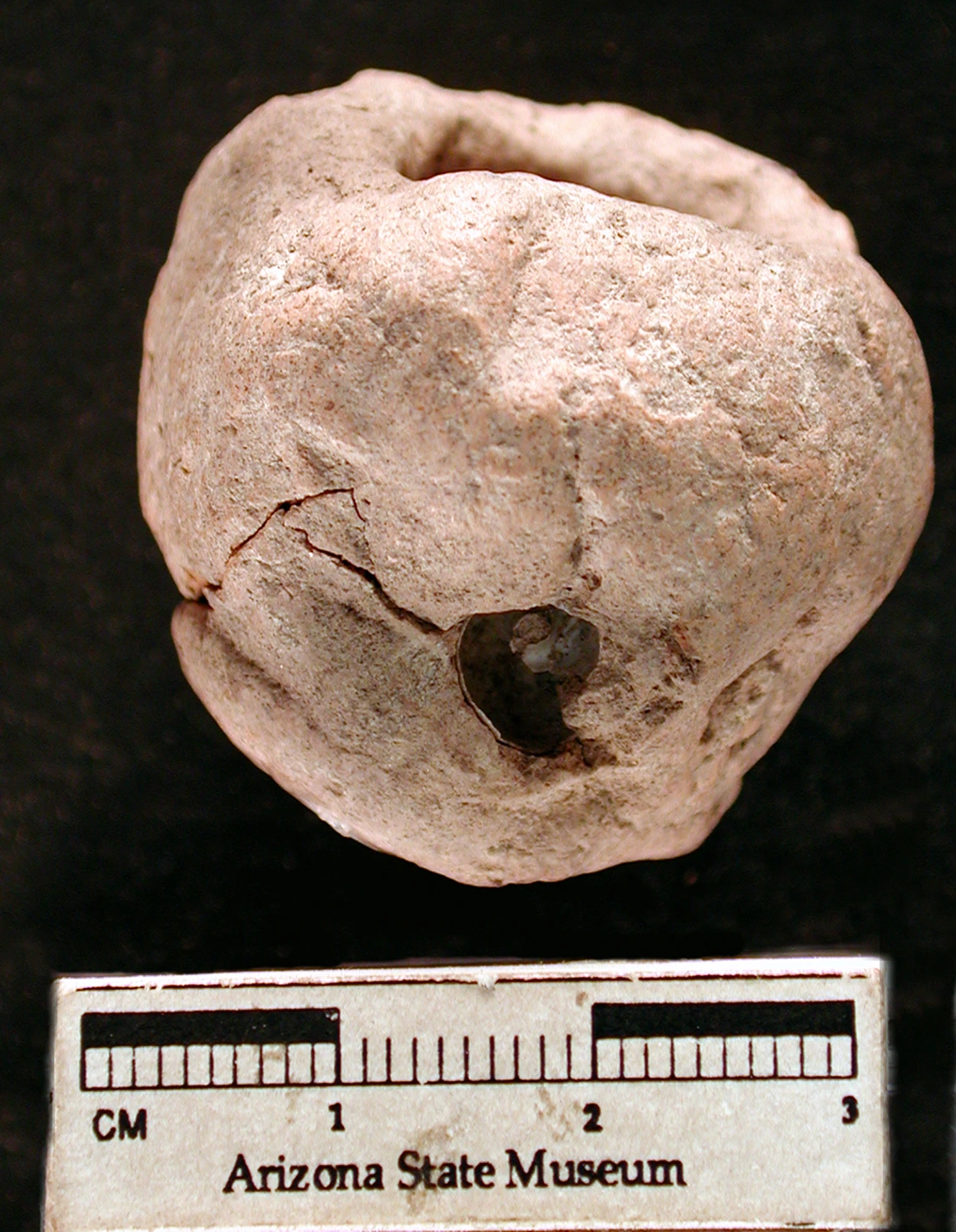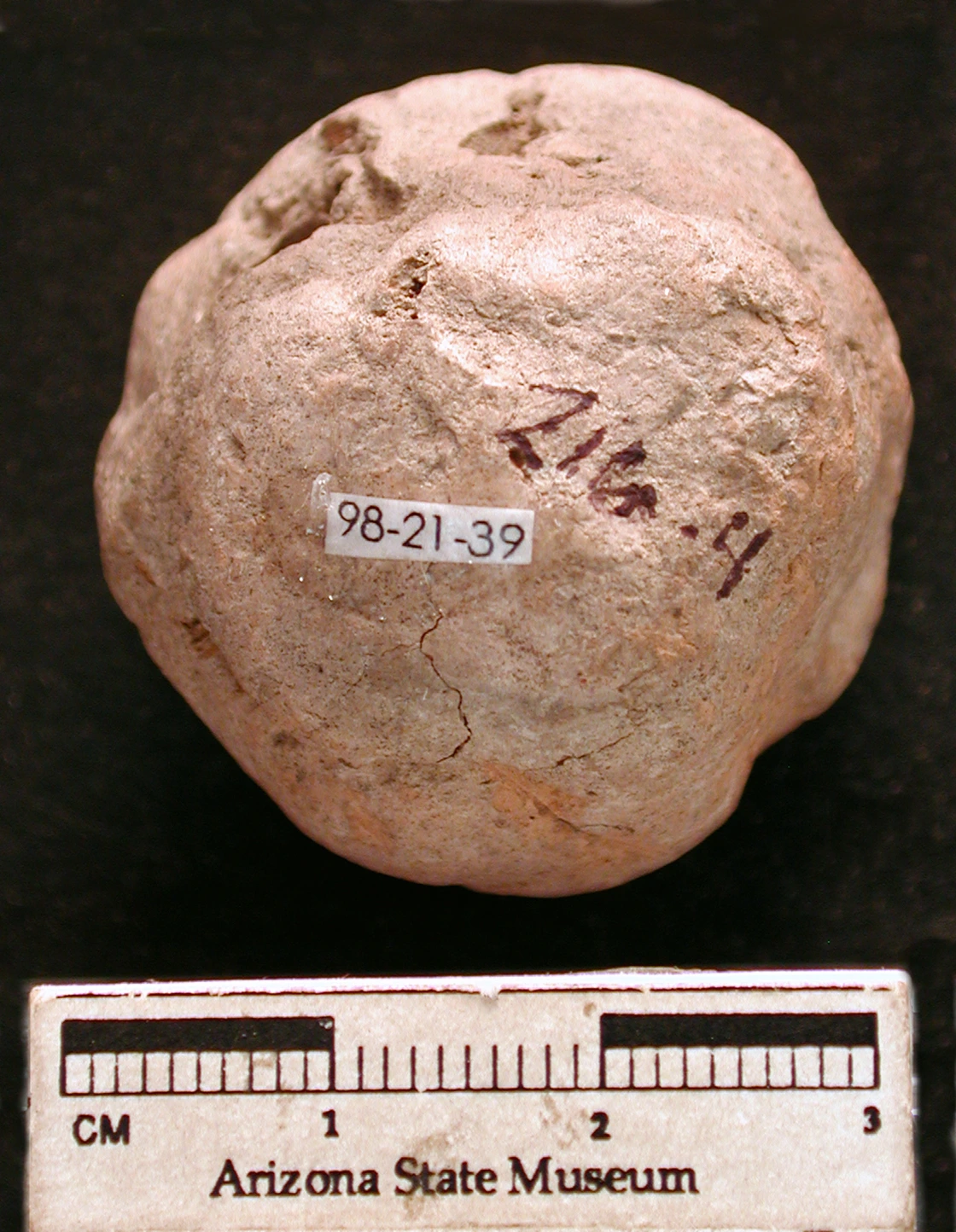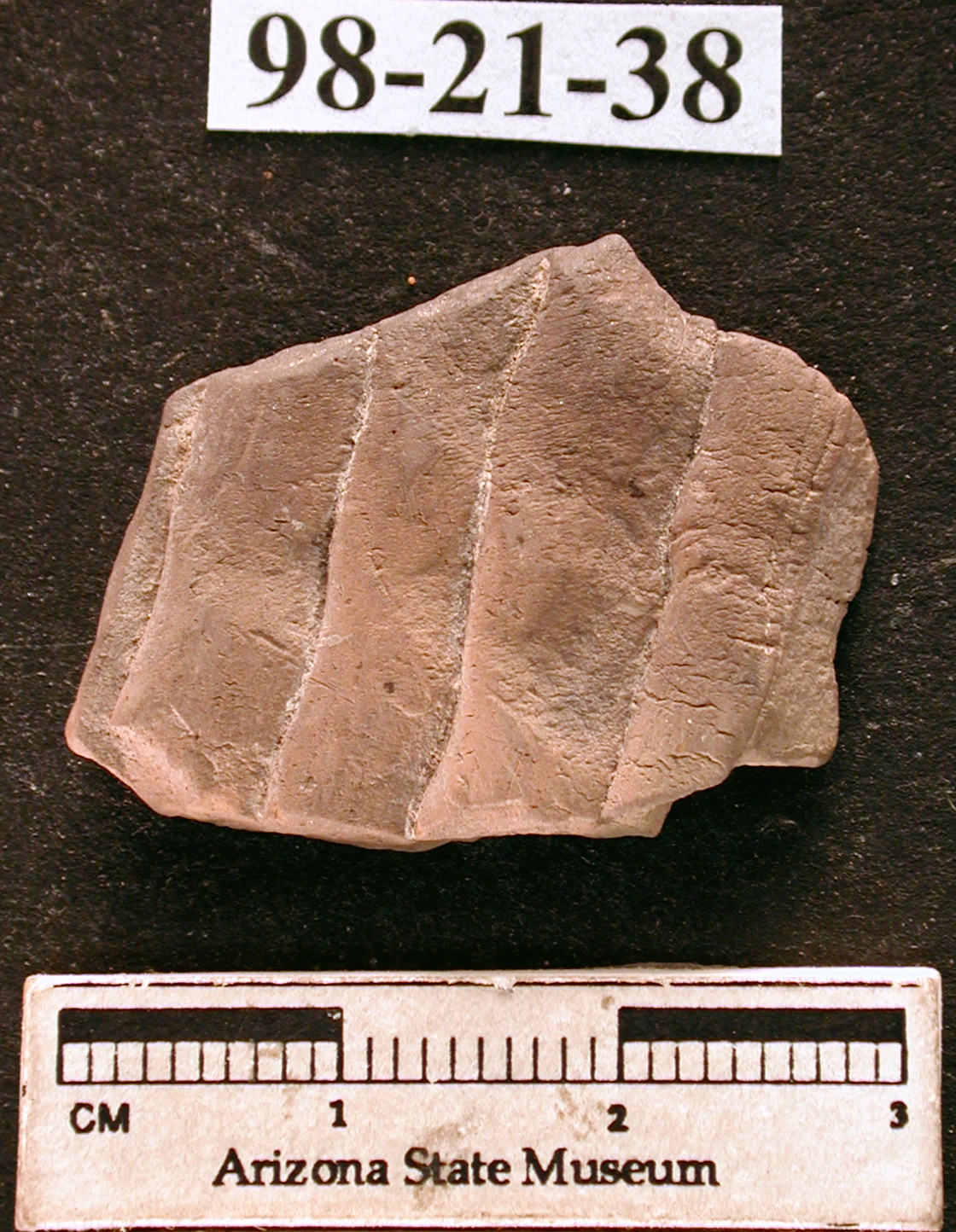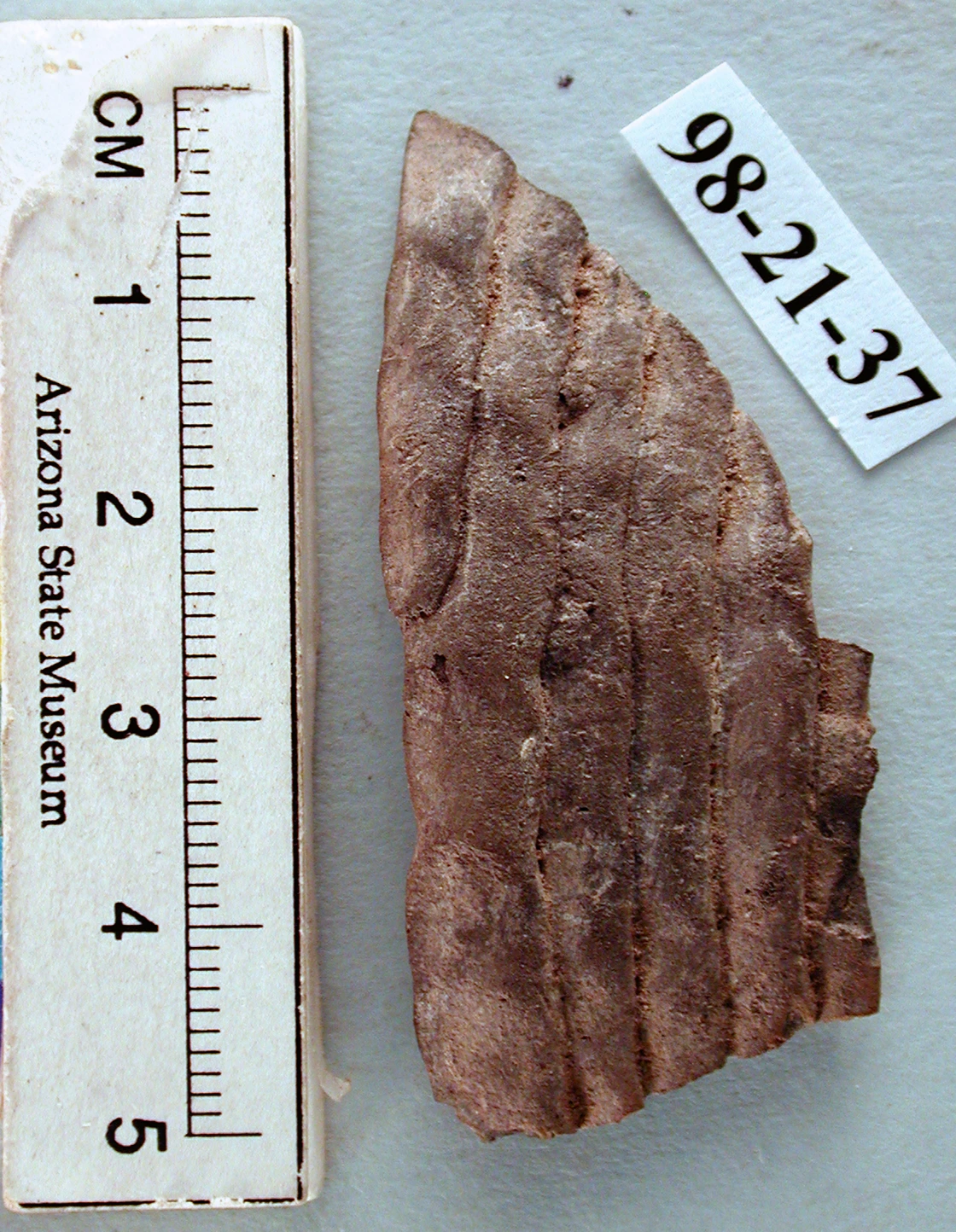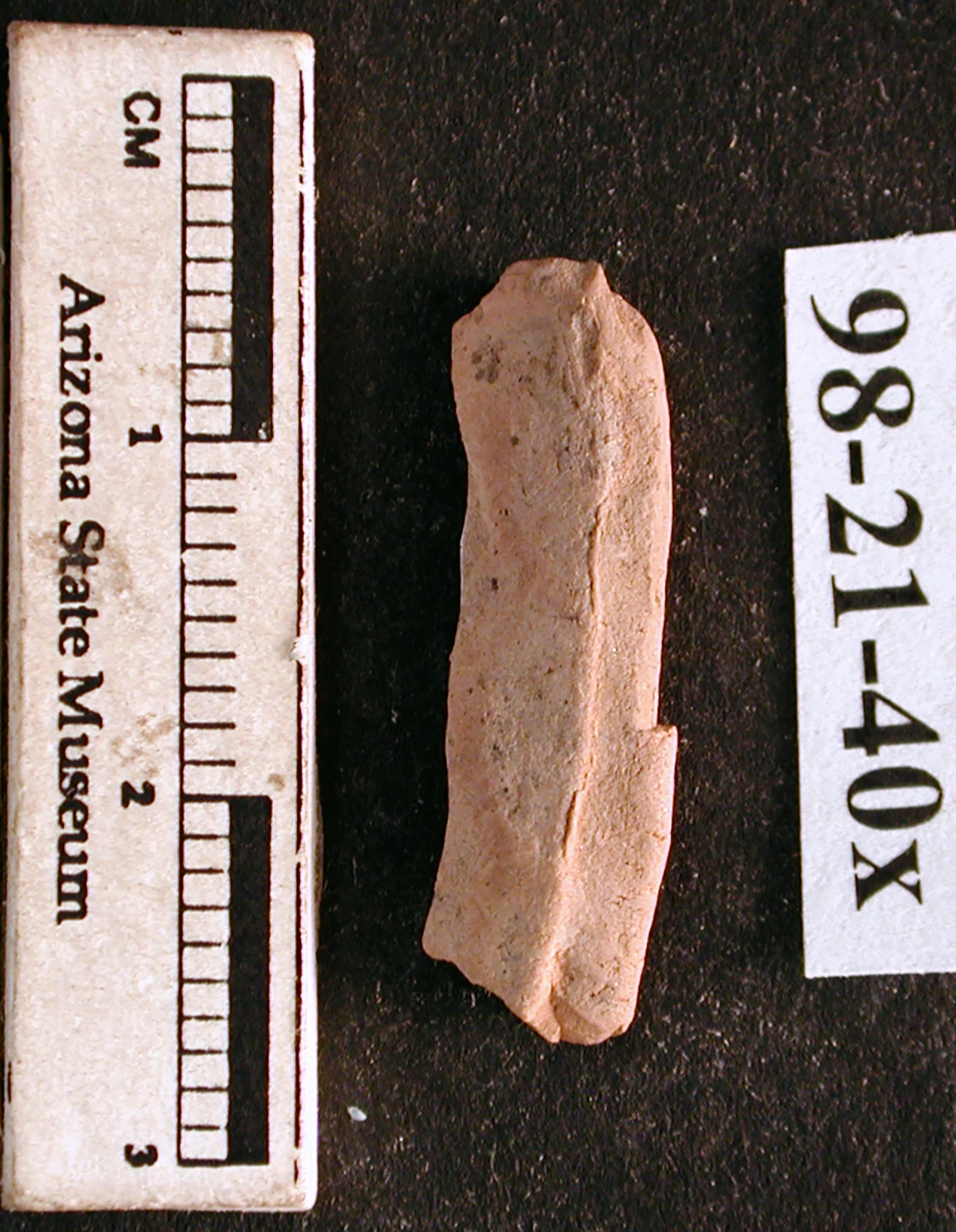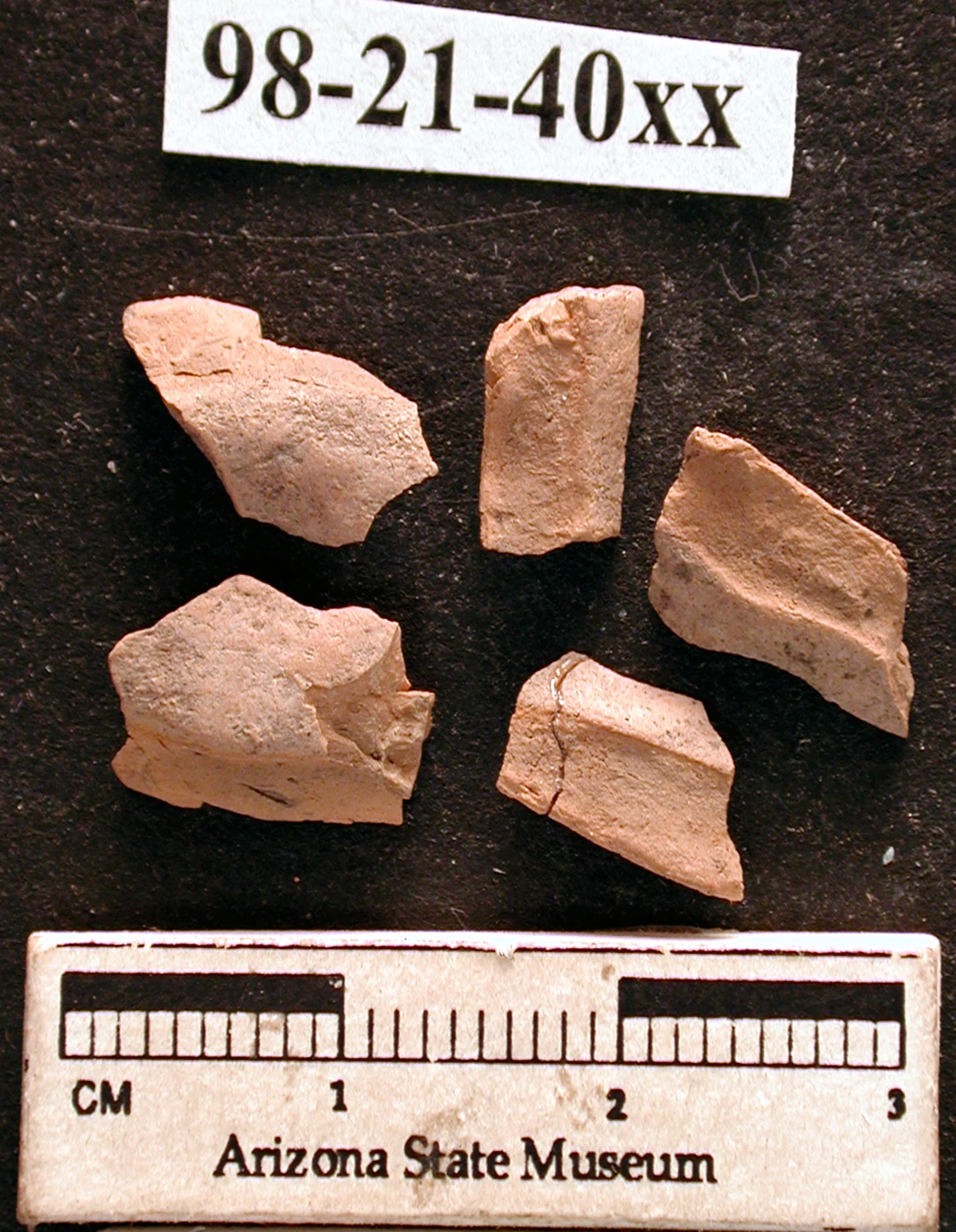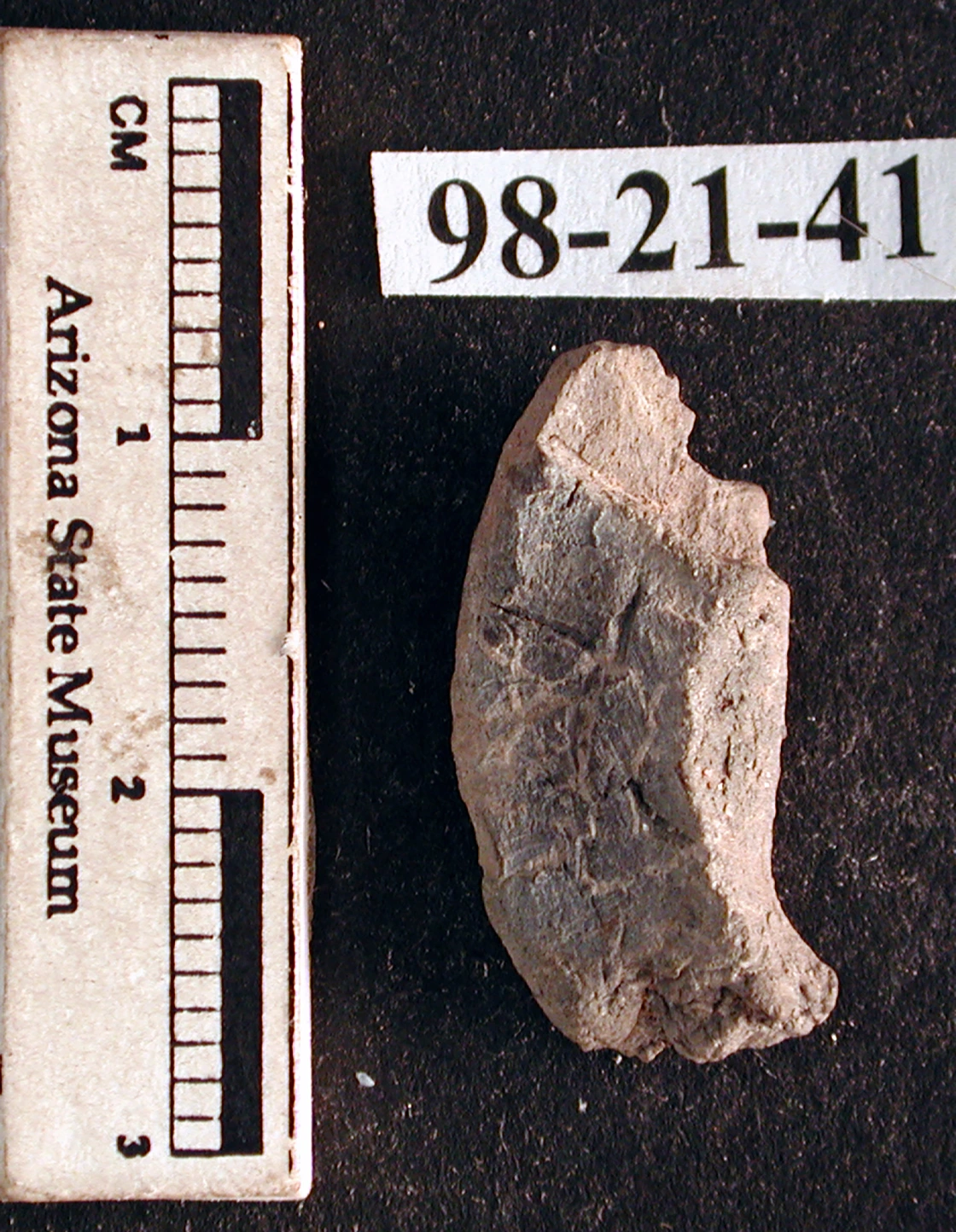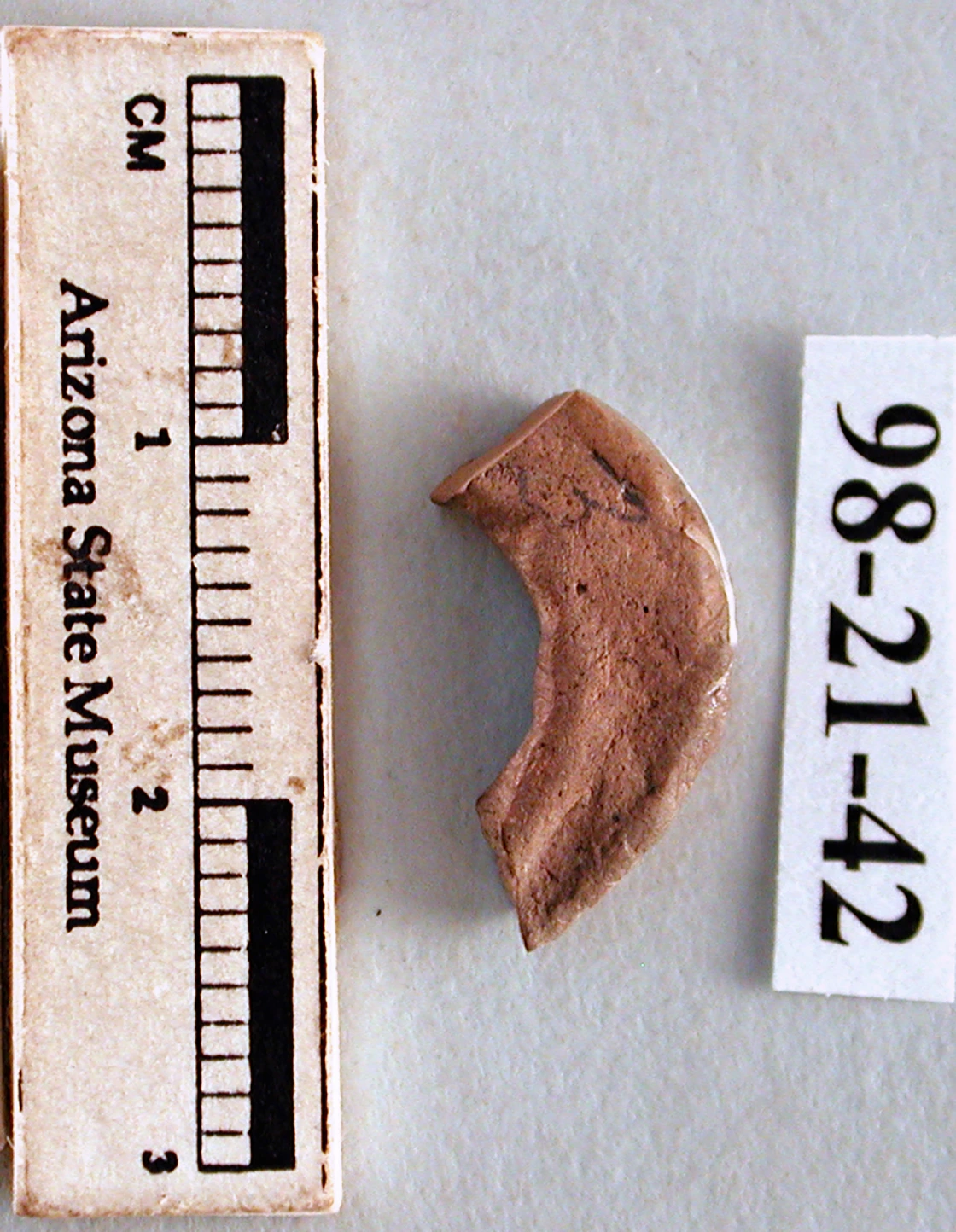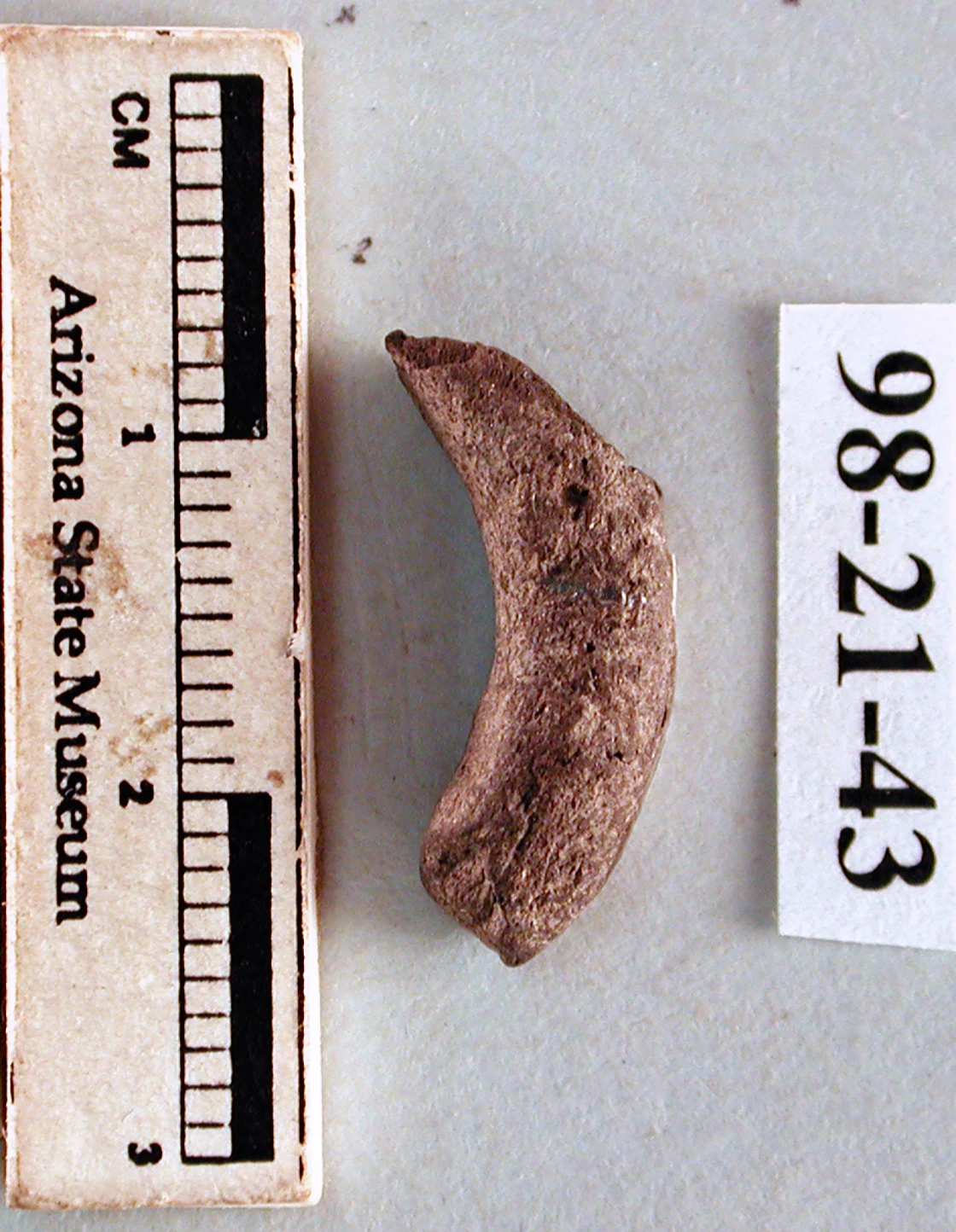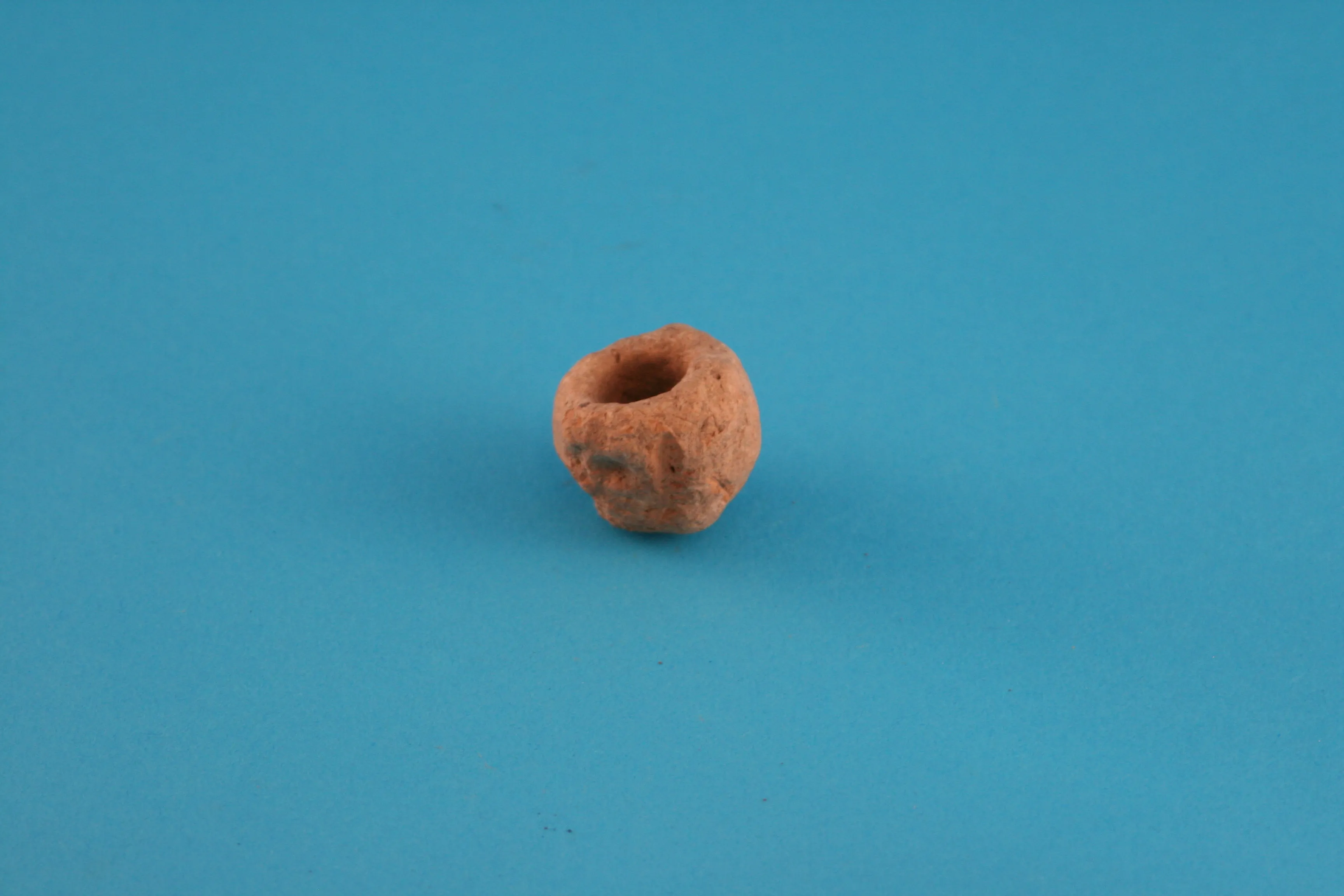
ASM Catalog No.1998-21-39
The earliest fired clay objects in the region date to the Early Agricultural period (ca. 2100 BCE-50 CE). These include many figurines as well as untempered, mostly miniature and fragmentary vessels referred to as incipient plain ware. To date, more than 200 such vessels and fragments thereof have been recovered from contexts that span the 2,000 years before the interval that archaeologists have named the Early Ceramic period (ca. 50-500 CE), which is distinguished by the widespread production and use of full-size ceramic containers.
1998-21-39 is the most complete specimen of incipient plain ware yet discovered. It was excavated from the Wetlands Site (AZ AA:12:90[ASM]), in the Tucson Basin, adjacent to the Santa Cruz River. The vessel measures ca. 3.4 cm (1.3 in) in maximum diameter and 3.1 cm (1.2 in) in height. The maximum diameter of its orifice is 1.5 cm (0.60 in). It was found in a Cienega phase (ca. 800 BCE-50 CE) pit structure.
Below are more examples of incipient plain ware from the Wetlands Site:
(Click on the right or left side of the image to advance the slideshow.)
For more information on incipient plain ware, see:
HEIDKE, JAMES M.
| 1998 | Early Cienega Phase Incipient Plain Ware and Tucson Phase Ceramics from the Wetlands Site. In Archaeological Investigations at the Wetlands Site, AZ AA:12:90 (ASM), edited by Andrea K. L. Freeman, pp. 187‑203. Technical Report No. 97‑5. Center for Desert Archaeology, Tucson. |
| 1999 | Cienega Phase Incipient Plain Ware from Southeastern Arizona. Kiva 64:311-338. https://www.academia.edu/5929706/Cienega_Phase_Incipient_Plain_Ware_from_Southeastern_Arizona |
| 2005 | Early Agricultural Period Pottery from Las Capas and Los Pozos. In Material Cultures and Lifeways of Early Agricultural Communities in Southern Arizona, edited by R. Jane Sliva, pp. 171-206. Anthropological Papers No. 35. Center for Desert Archaeology, Tucson. https://www.academia.edu/6494257/Early_Agricultural_Period_Pottery_from_Las_Capas_and_Los_Pozos |
| 2006 | Native American Pottery. In Rio Nuevo Archaeology, 2000-2003: Investigations at the San Agustín Mission and Mission Gardens, Tucson Presidio, Tucson Pressed Brick Company, and Clearwater Site, edited by J. Homer Thiel and Jonathan B. Mabry, pp. 7.1-7.93. Technical Report No. 2004-11. Center for Desert Archaeology, Tucson. https://www.archaeologysouthwest.org/pdf/rio_nuevo_full_small.pdf |
| 2019 | Prehistoric and Historic Native American Pottery from the 2007 and 2008 Investigations at the Clearwater Site, AZ BB:13:6 (ASM). In Archaeological Investigations in 2007 and 2008 at the Mission and Mission Garden Loci of the Clearwater Site, AZ BB:13:6 (ASM), and the Santa Cruz River Westside Canals, AZ BB:13:481 (ASM), Tucson, Pima County, Arizona, edited by J. Homer Thiel, Michael L. Brack, and Michael W. Diehl, pp. 337-384. Technical Report No. 2008-06. Desert Archaeology, Inc., Tucson. |
HEIDKE, JAMES M., AND ALAN FERG
| 2001 | Ceramic Containers and Other Artifacts of Clay. In Excavations in the Santa Cruz River Floodplain: The Early Agricultural Period Component at Los Pozos, edited by David A. Gregory, pp. 163-194. Anthropological Papers No. 21. Center for Desert Archaeology, Tucson. |
HEIDKE, JAMES M., AND JUDITH A. HABICHT-MAUCHE
| 1999 | The First Occurrences and Early Distribution of Pottery in the North American Southwest. Revista de Arqueología Americana 14:65-99. https://www.academia.edu/1793235/The_first_occurrences_and_early_distribution_of_pottery_in_the_North_American_Southwest |






